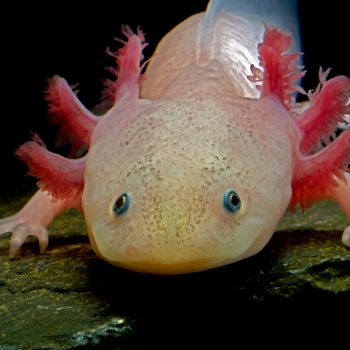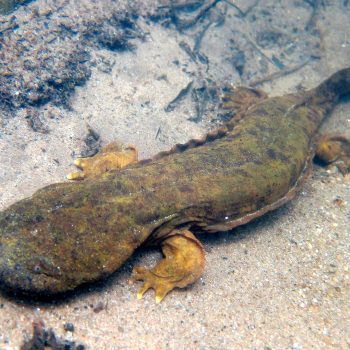All squeak, no bite: The common mudpuppy
Gills outside the body, a flat head and a propensity to eat anything it can fit in its mouth, it sounds like a description of an alien species, does it not?
Luckily for us, this isn’t the work of H.G Wells, and these creatures aren’t going to attack us with heat-rays or spread red weeds everywhere.
This description is of the common mudpuppy, and true to its name, it is an adorable lake-loving creature found here in the Midwest. It’s not a dog, it can’t bark and it doesn’t enjoy a good tummy rub, but this rare and majestic salamander is wonderfully unique and captivatingly cute.

What is a mudpuppy?
Before anything else, we need to state the obvious: mudpuppies are not puppies, they are salamanders.
Mudpuppies (Necturus maculosus) are larger salamanders, usually measuring in at just over a foot long, and are generally a rusty brown or grey color. They don’t go through full metamorphosis like most amphibians do.
Metamorphosis is when an animal’s body changes at a certain age from a juvenile form to an adult form, usually fairly rapidly (in terms of body development, at least). Mudpuppies are fairly unique among salamanders in that they don’t do any of that. They don’t undergo some massive body change or transition from juvenile to adult. They simply grow.
The most noticeable effect of not undergoing metamorphosis, in the mudpuppy’s case, is the huge set of “feather dusters” on its head.
These frilly plumes are actually gills made of filaments containing blood vessels, and they work the same way lungs do. Mudpuppies pump blood through the gills and as the blood moves through the gills, it picks up all of the oxygen in the nearby water, just like how lungs take up oxygen from the air.
In fact, this is almost exactly the same as how fish gills work, except that the gills are outside the body, so the mudpuppy depends on the water’s current or moving around the water to continue to have fresh oxygen.
This is also why they live in the water their entire lives; even though there is more oxygen in the air than in water, gills are designed to efficiently capture whatever oxygen is available in the lakes and streams.
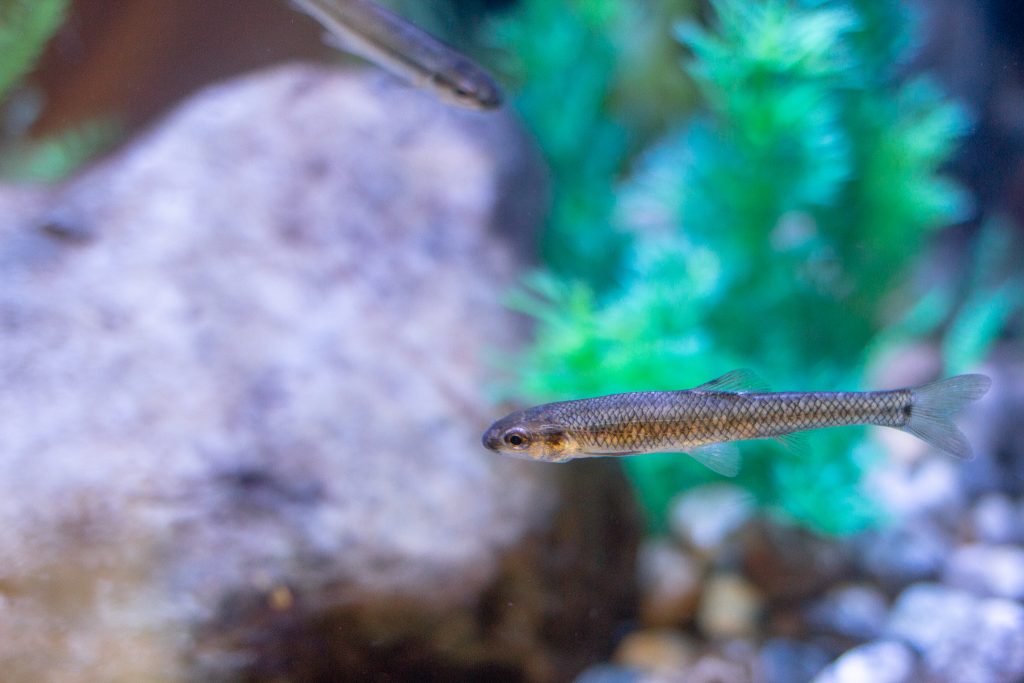
What do mudpuppies eat?
Necturus maculosus eat most anything that moves that they can fit in their mouths. This includes small invertebrates like insects, worms and spiders as well as small fish, crayfish, snails and sometimes even other amphibians. Some research even shows that the mudpuppy may even forage and consume zebra mussels! They have an attached jawbone, however, which means they can’t eat larger prey.
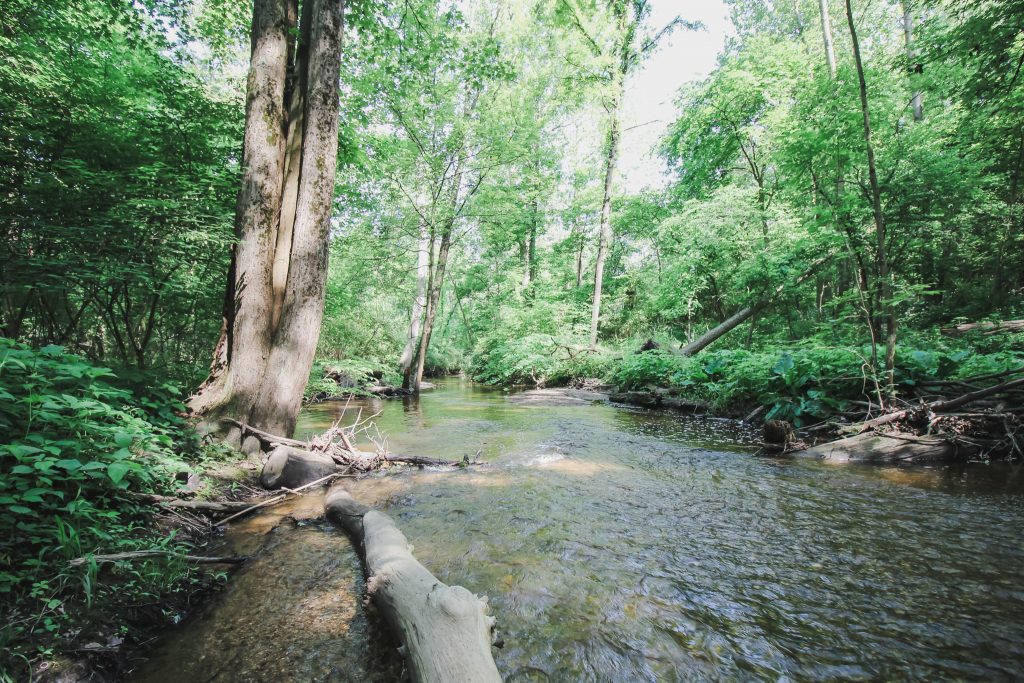
Where do mudpuppies live?
Mudpuppies like to hide. They make their homes in holes under rocks, logs or other things they can burrow beneath. In fact, that is why their head is flat and spade-shaped; it makes burrowing into the sand or gravel under rocks easy! They like the cool deeper waters of lakes but need areas where there is oxygen in the water. They also sometimes live in streams.
Why are mudpuppies important?
Mudpuppies have permeable skin, meaning some chemicals (for example, oxygen) can pass through their skin into their bloodstream. This makes them, and many other amphibians, very sensitive to water pollution, and even more so because they live exclusively in the water. Thus they are considered bioindicators, species whose presence means there is not much pollution and the ecosystem is generally healthy and diverse.
Another reason they’re important is that they help other species native to their territory. One in particular is the salamander mussel, a mussel whose larvae depend on the mudpuppy’s frilly facial features to be spread.
Mudpuppies are native to Indiana, but unfortunately their populations have shrunken drastically in recent history.
There are several causes, but most of them are caused by humans. First, loss of habitat is a big factor in the missing mudpuppy mystery. They don’t like to live in silty or mucky streams, as the fine particles makes it harder for them to get oxygen. Second, as we mentioned earlier, they are bioindicators. Their absence indicates that perhaps there is too much pollution. They need very clean water, which unfortunately isn’t as common here as it once was. And just like Dr. Suess’s Humming Fish, whose gills were all gummed, the mudpuppies have hidden, in hopes of finding water that isn’t so smeary.
But that doesn’t mean they won’t come back! With conservation efforts from many here in Kosciusko County over the past years, water qualities and habitats are being restored and protected, and hopefully soon we will be having confirmed reports of mudpuppies back in their ancestral homes once again!
Mudpuppy... not an axolotl, nor hellbender, nor tiger salamander larva
Mudpuppies have a few doppelgangers that people always get confused.
The most notorious look-alike is the ever-popular axolotl. The axolotl is another type of salamander that does not do metamorphosis, and as such it has external gills just like the mudpuppy. They are not related, however. First and foremost, they are from two very different areas; the axolotl is from Central America and could not survive in Indiana’s colder climate, and the mudpuppy couldn’t deal with the heat that axolotls thrive in. Taxonomically speaking, they are in the same order (the order Urodela), but all that means is that they are both salamanders. By that same logic, they are about as far apart as buffalo are from giraffes.
Mudpuppies are also confused with a cousin of the axolotl, the larvae of the tiger salamander. Again, the resemblance is striking, however the tiger salamander larvae is just what it sounds like: a larva. Unlike mudpuppies, tiger salamander larvae will undergo metamorphosis and will lose their gills.
Lastly in the list of salamanders that aren’t mudpuppies is hellbenders. Hellbenders are in fact native to Indiana (only the southern parts though) but they do not look much alike. Hellbenders are very large salamanders, growing up to three feet long, and do not have external gills. They also aren’t related to mudpuppies, at least not closely.
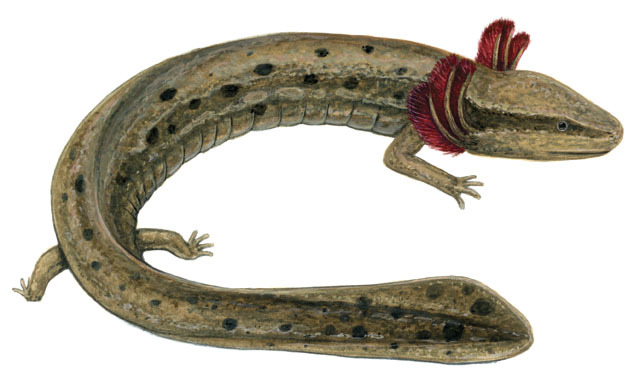
The most important question: do mudpuppies bark?
There is a common myth about mudpuppies, often equating the ‘puppy’ part of ‘mudpuppy’ to the fact that they are believed to make a barking noise when out of water.
Whether they do or not is generally a mystery, and different sources suggest opposing things. Some say that they make a squeaking or squealing noise when they are distressed out of the water, which could perhaps be confused with a dog barking, while others say that it is all hogwash and they don’t make any noises.
Mudpuppies do share one characteristic with their puppy counterparts: biting. They are typically gentle creatures but may bite if stressed or provoked. As always, exercise caution around native critters.
Although mudpuppies are rare, they have been sighted in Kosciusko County lakes! If you see one, don’t disturb its home. Its presence is a sign your lake is healthy.
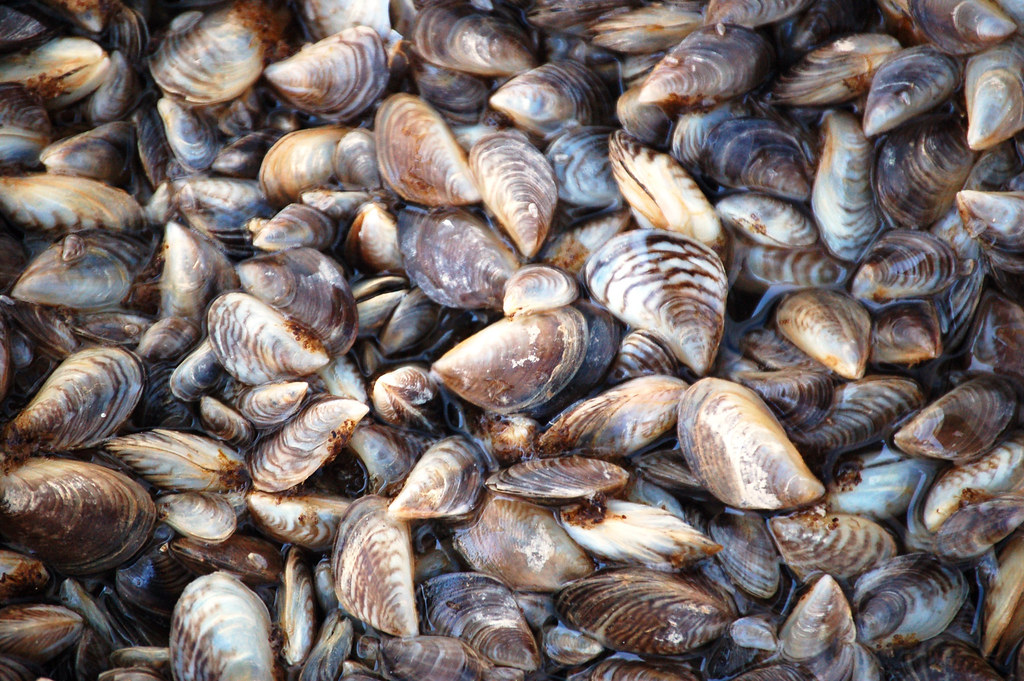
What else lives in our lakes?
Zebra mussels, for starters! This invasive species is found all too often. Learn how they got here and what you can do about them:
